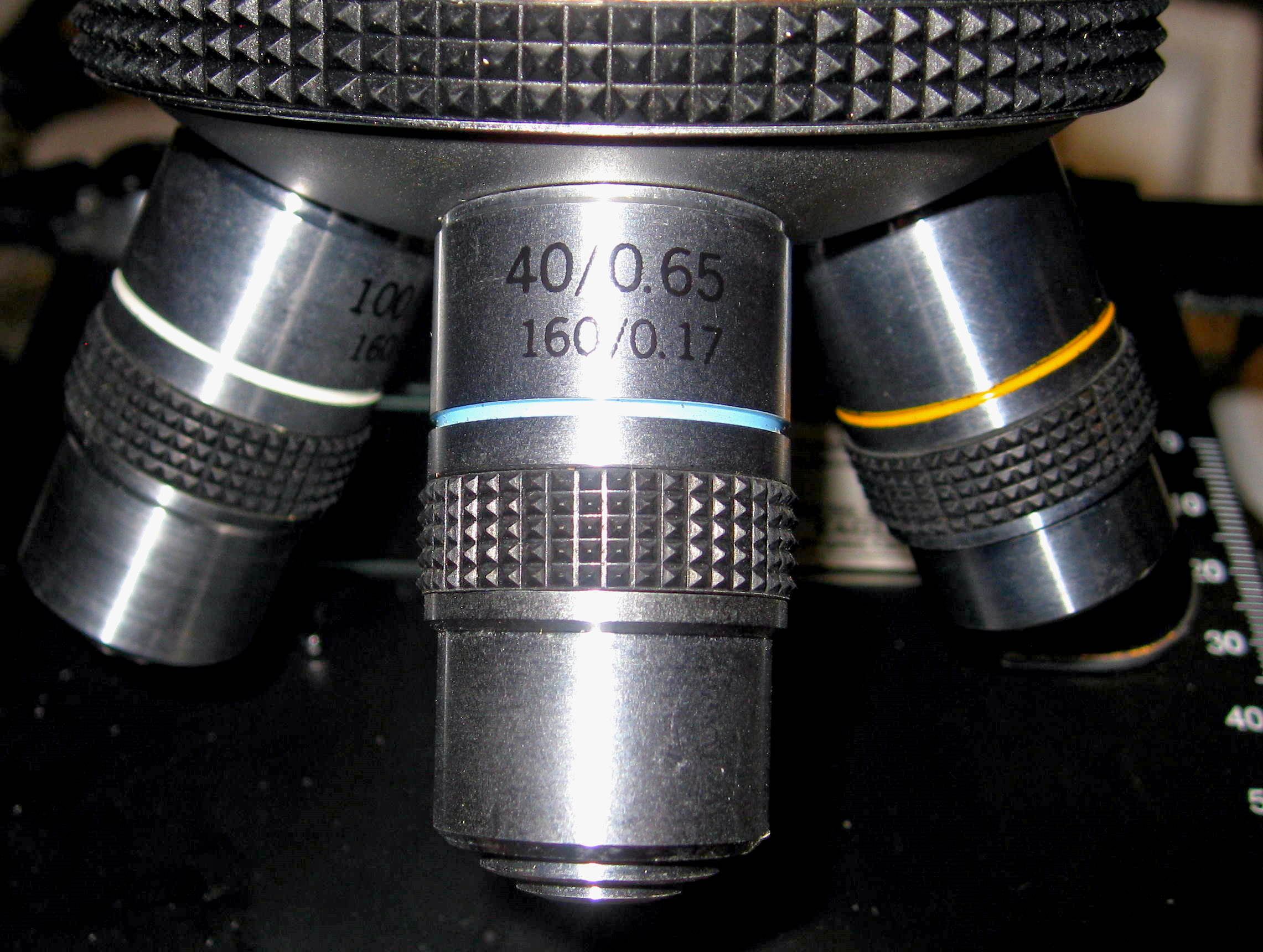The objective lens is the heart of the microscope, but usually there is very little that has to be controlled. Objectives are generally attached to a revolving nosepiece, and changing resolution is a matter of rotating another objective into place.
One or more of the high power objectives may be oil immersion objectives, designed to work while a drop of special oil fills the space between the slide and the objective lens. When moving an oil immersion lens into position, always rotate it into place, never lower it into place. This will prevent bubbles from forming in the oil and ruining the image.
Specimen slides generally have cover slips over the specimen. This protects the specimen and the objective, but the cover slip is actually an integral part of the optics of a microscope. Objective lenses are designed for cover slips of a particular size. This size is marked on the side of the objective lens.
The objective lens shown above is a 40x objective, with a numerical aperture of 0.65, designed to work with a microscope tube 160 millimeters long, and with cover slips that are 0.17 millimeters thick. This thickness corresponds to cover slips with a number 1½ thickness (defined as being between 0.16 millimeters and 0.19 millimeters).
If no cover slip is used, or a cover slip of the wrong thickness is used, the optical corrections of the objective (for spherical aberration and chromatic aberration) will not be right, and the image will suffer.
Some objective lenses are designed to be used without a cover slip, and will be marked with a zero. Some objectives, particularly the lowest power objectives, are not corrected, and are marked with a dash where the cover slip thickness would be. Still other objectives have an adjustment collar, so the lens can be adjusted to the thickness of the cover slip that is used.
